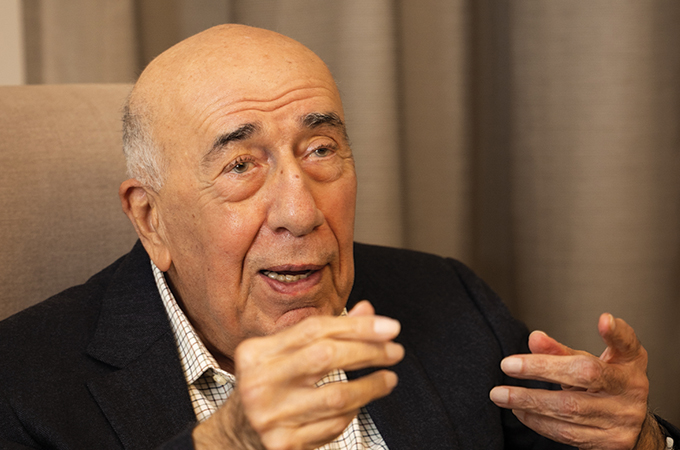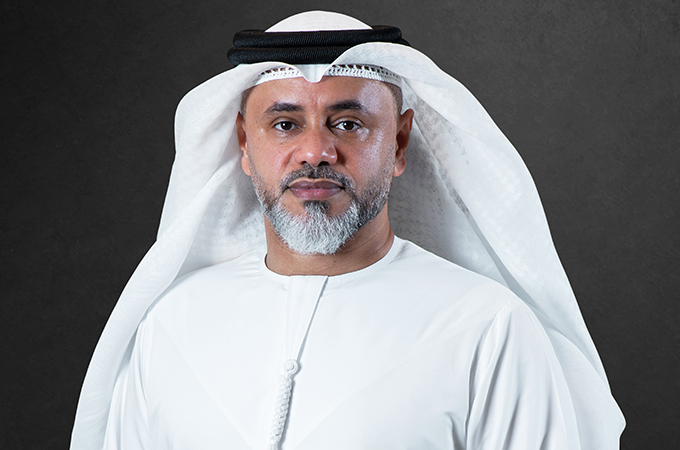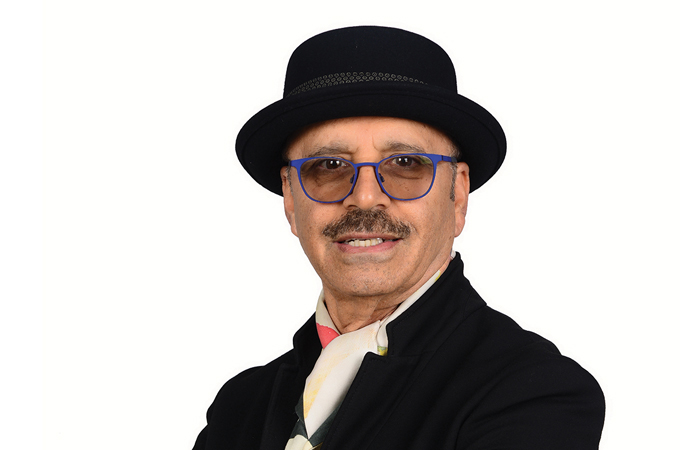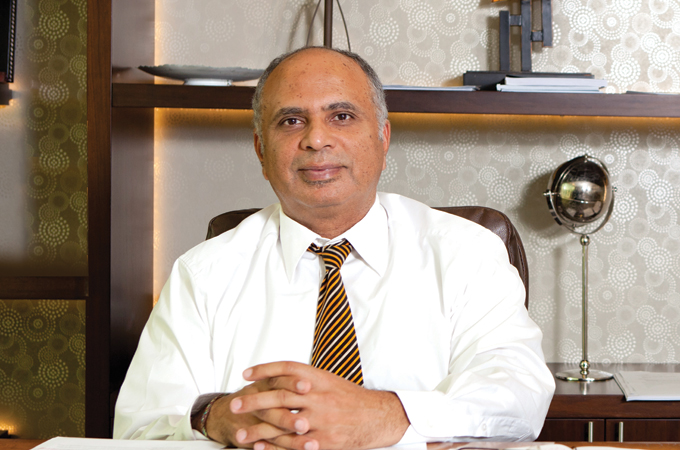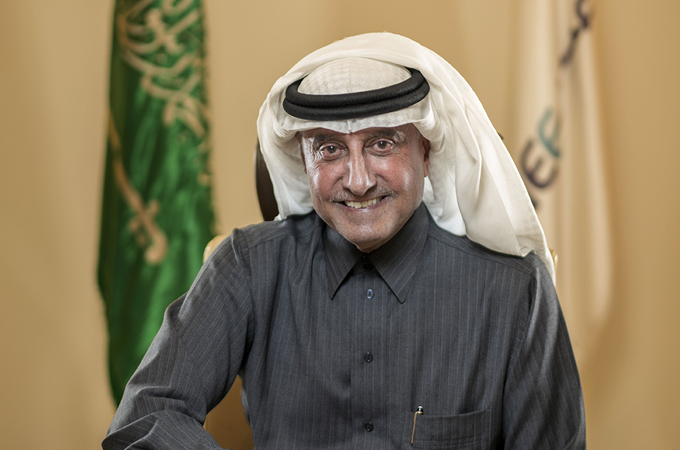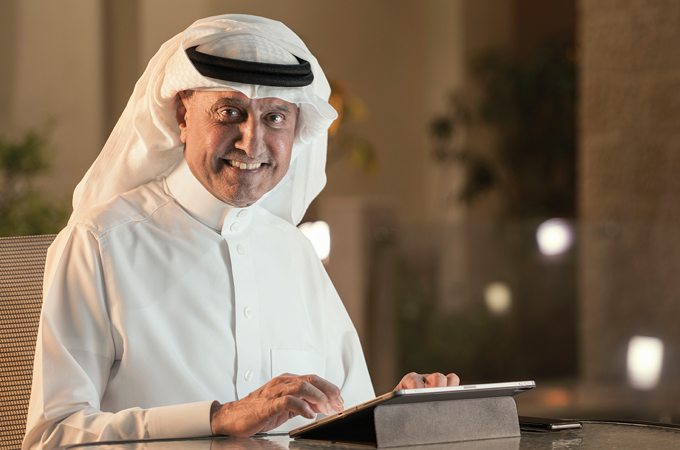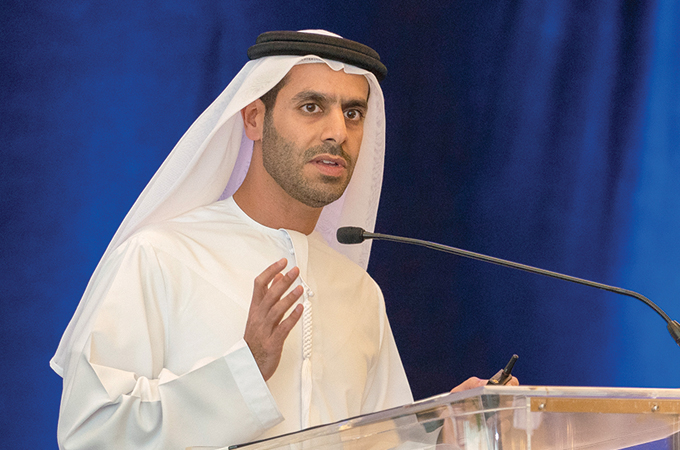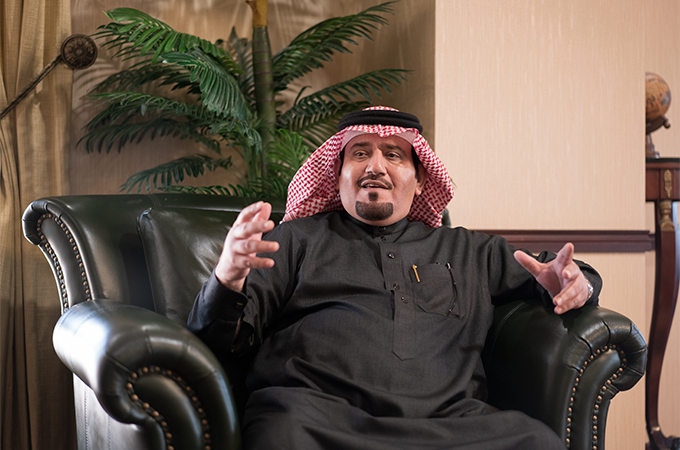Autumn 2023
Palestine-born Samia Halaby, a luminary in the realm of contemporary abstract art, is honoured with a retrospective entitled “The Lasting Impressions: Samia Halaby”.
This exhibition offers art patrons an exquisite glimpse into the kaleidoscope of Halaby’s artistic evolution over six decades. About 180 of her works, spanning a diverse array of sizes and media representing her career through abstract paintings, sculptures, digital works, documentary drawings and more enrapture the senses of art connoisseurs and enthusiasts alike.
Born in Jerusalem in 1936, Halaby is a leading abstract painter and an influential scholar of Palestinian art. Although based in the United States since 1951, she is recognised as a pioneer of contemporary abstraction in the Arab world.
Halaby began her career in the early 1960s, shortly after graduating from Indiana University with a MFA in Painting. While teaching at the Kansas City Art Institute in 1964, she travelled to the Eastern Mediterranean as part of a faculty research grant and studied the geometric abstraction of the region’s Islamic architecture, which has continuously factored into her work. During this time, Halaby launched a series of experiments that would initiate a career-long investigation of the materialist principles of abstraction: how reality can be represented through form.
Also influenced by the abstract movements of the Russian avant-garde, Halaby works with the conviction that new approaches to painting can redirect ways of seeing and thinking not only within the realm of aesthetics but also as contributions to technological and social advancement. This underlying notion has led to additional experiments in drawing, printmaking, computer-based kinetic art, and free-from-the-stretcher painting.
From the 1960s until the late 1980s, Halaby taught at universities throughout the United States. She was the first full-time female associate professor at the Yale School of Art, a position she held for a decade. Her noteworthy contributions to American academia include a groundbreaking undergraduate studio art programme that she introduced to art departments throughout the Midwest.
Halaby is today an internationally recognised artist known for her exceptional talent. Alongside her artistic pursuits, she is a dedicated advocate for Palestinian rights.
The Sharjah exhibition serves as a powerful testament to the indomitable spirit of a woman who has redefined the very fabric of contemporary art. Halaby’s oeuvre transcends the boundaries of traditionalism, embracing the bold and the abstract. Her creations, whether in the form of paintings, sculptures, digital masterpieces, or documentary drawings, carry with them a unique aura, a profound insight into the multifaceted nature of human expression.
“The Lasting Impressions”, as the exhibition is aptly named, resonates as a reflection of her enduring impact on the world of art. Yet, for this illustrious artist, the name carries a deeper significance.
The exhibition reflects the wonderful reaction her work elicits in the youths of our time, especially among Arab youth whom she admires. She takes note of their talents and high commitments to our future. These discerning viewers perceive her abstraction exactly as she envisions, recognising in it a reflection of their own pre-existing experience. Her paintings “mirrors our shared perception of the world we live in,” as she describes them.
Halaby, a visionary herself, admires the talents and unwavering commitment of these discerning viewers who have embraced her abstraction with open hearts and keen eyes. Her work, she believes, mirrors a shared perception of the world we live in. In the intricate dance of colours, shapes, and emotions, the youths of today see reflections of their dreams, aspirations, and a future yet to unfold.
In her renowned paintings – which have been collected by international museums since the 1970s – Halaby draws inspiration from nature and historical movements such as early Islamic architecture and the Soviet avante-garde.
Halaby believes that new approaches to painting can transform our ways of seeing and thinking, not only within aesthetics, but also as a way to discover new perspectives for advances in teaching, technology, and society at large. This conviction has inspired her to pursue additional experiments in drawing, printmaking, computer-based kinetic art, and free-from-the-stretcher painting.
Interest in Halaby’s work has grown significantly over the past decade within the Arab and Western art scenes, as her paintings both expand the tradition of Islamic geometry and modern painting, and introduce non-western contributions to modernism in New York and London.
Her works have been exhibited in galleries and are housed in private collections throughout the world. Halaby is collected by many museums such as the Solomon R Guggenheim Museum of Art (New York and Abu Dhabi); Cleveland Museum of Art; Institut du Monde Arabe; and Birzeit University (Ramallah). She is represented by Ayyam Gallery (Beirut and Dubai).
The abstraction she presents has its basis in reality by being an imitation of principles extracted from reality rather than one particular appearance of reality.
She employs visual abstraction to convert what our senses have stored in our memory over a long period of time, “what the viewer and I already know”, into abstract visual form. Through such abstract creations she represents the inherent visual experience that resides within us all; abstract shape, colour, light, and movement combine into art in which the viewers recognise their own experiences. She does so by employing the extensive knowledge regarding methods and technologies that she avidly studied, ranging from methods of using paint to using digital media.
Through her visionary approach to abstract painting, she has gained an impressive reputation, solidifying her standing as a forward-thinking artist. Through her unique artistic style, extensive range of methods, and prolific artistry, she has redefined the notion of abstraction with a remarkable level of precision, ensuring the clarity in her creative process and cementing her position as a visionary abstract painter.
As a Palestinian artist, she experiences the agony of exile and displacement from her homeland. The painful memory of exile enters her painting not as subject matter but often as titles to place in the Palestine she loves. She will not mix political history with her exploration of abstraction but she does state that being loyal to abstraction is itself a political art. Palestine as experience is clearly the driving force, allowing her to exert great effort to create the documentary series of memorialising the Kafr Qasem Massacre.
She has participated in recent group shows at Grey Art Gallery, New York City, USA (2020); Palestinian Museum, Birzeit, Palestine (2019); Ayyam Gallery (2017, 2018); Katzen Art Center, American University Museum, Washington, USA (2017); Palestine Museum, Birzeit, Palestine (2017); Galerie Tanit, Munich, Germany (2017); The School of Visual Arts, New York, USA (2017); Zürcher Gallery, New York, USA (2016); Third Qalandiya International Biennial (2016); Darat Al Funun, Amman (2015); the National Academy of Arts, New York (2015); The Guggenheim Museum, Abu Dhabi (2014); Broadway 1602, New York (2014); and Institut du Monde Arabe, Paris (2009).
In addition to her prolific career as an artist, Halaby is also heralded as an innovative thinker, educator, and activist. Her writings on art history, pedagogy, and aesthetics have appeared in numerous publications over the last three decades.
Her 2002 survey, Liberation Art of Palestine, is a seminal text of Palestinian art history. Halaby has published two books within the past year: Drawing the Kafr Qasem Massacre – recipient of a 2017 Palestine Book Award – and Growing Shapes: Aesthetic Insights of an Abstract Painter.
As an educator, Halaby introduced a groundbreaking undergraduate studio art programme to art departments throughout the Midwest. A New York-based advocate, Halaby has also been organising for causes concerning class, race, and Palestine since the 1970s.
“My advice to young aspiring artists in the Arab world and other similar countries that are torn by political, economic and social problems caused by imperialist challenges is to concentrate on history and its details, and to not follow the existing media, because there are a lot of lies,” she told Reuters in an interview. “They should be attentive to their surroundings and their societies ... specifically the common class of society.”
So how does this political engagement fit with the better known abstract works of an artist who was born in Jerusalem in 1936, but left her homeland upon the creation of Israel in 1948, and has made her life in the United States?
“Palestine is very present in my life, but when you ask me where it lies in my paintings – it exists, but you wouldn’t find one of my abstract paintings about Palestine, you can’t find Palestine in the paintings’ titles,” she says.
“But it has affected me differently, by making me politically progressive, which made me think about art and what it is ... Hence my choice of abstract art – because it is an optimistic kind of art, a futuristic one rather than an art that lives in the past.”



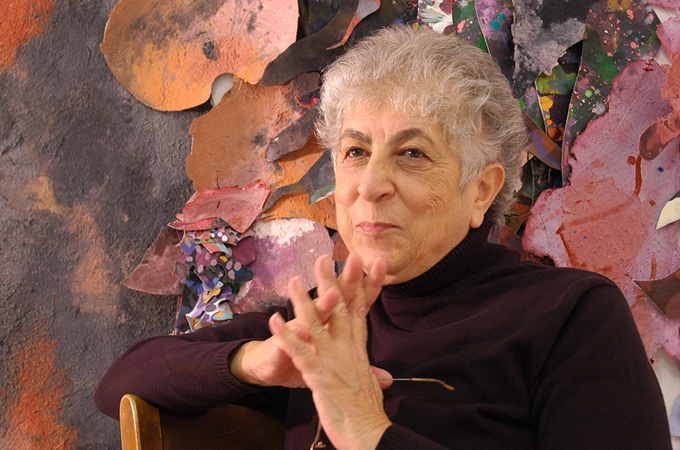

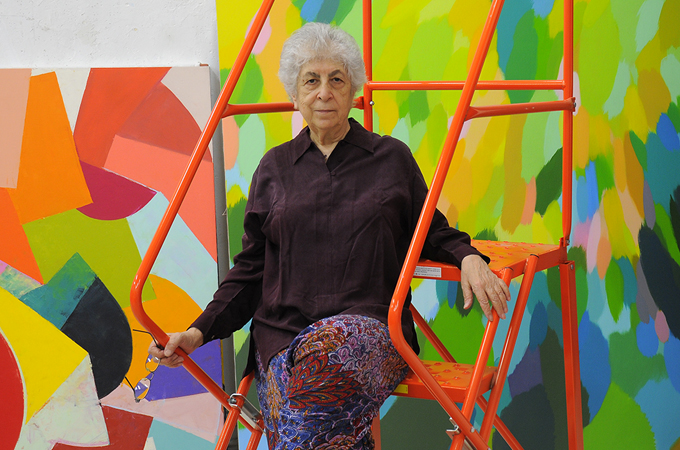
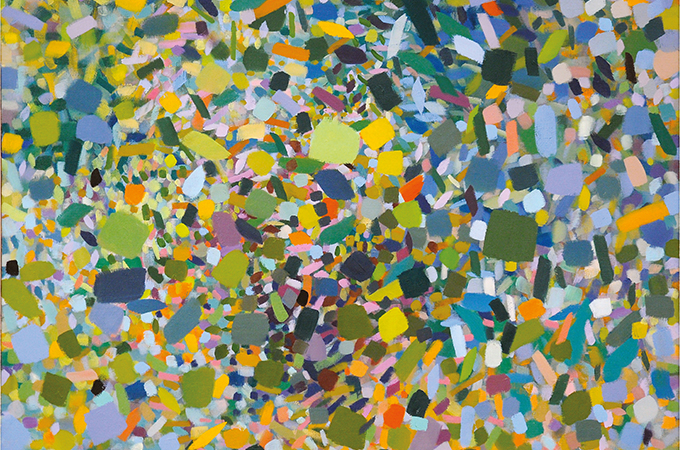
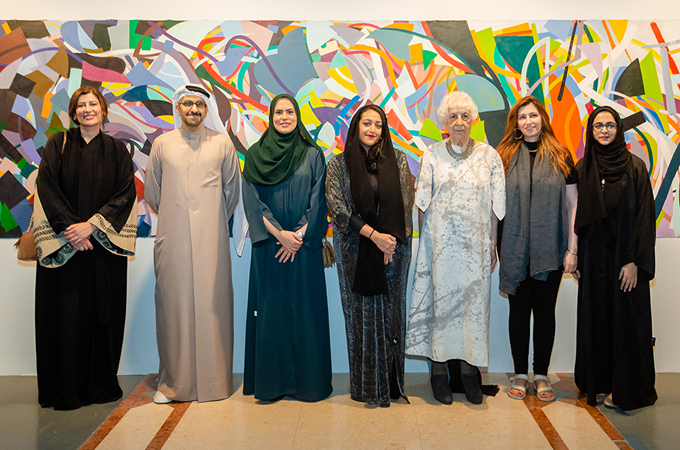
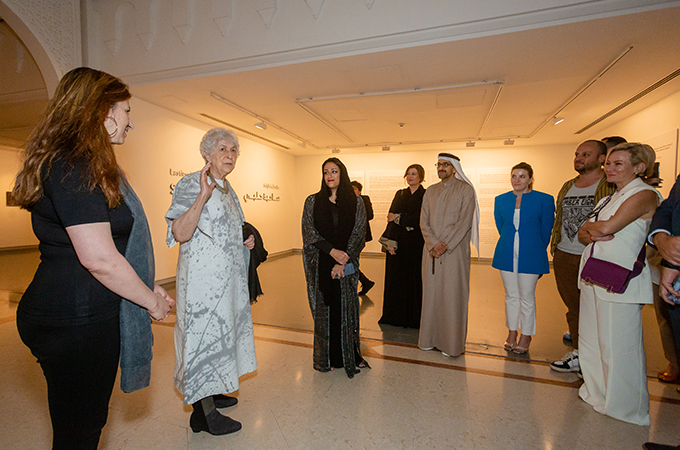
.jpg)
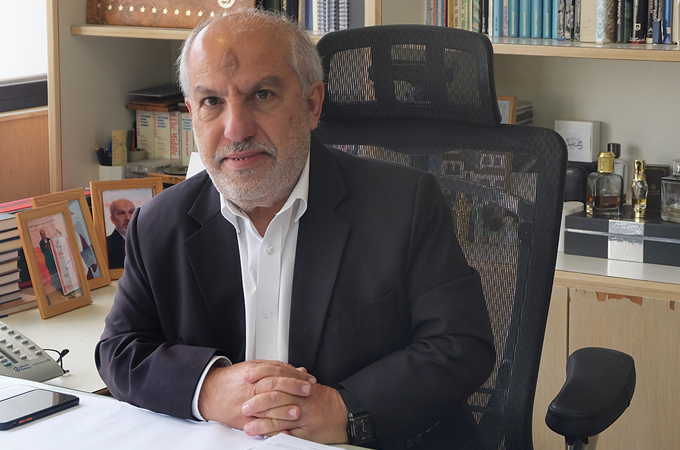
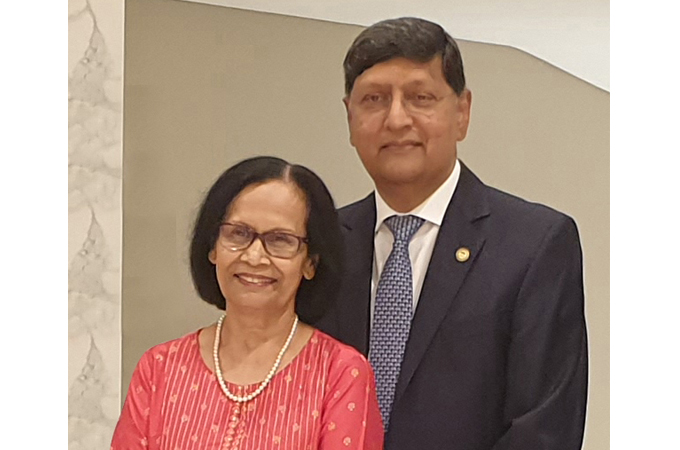
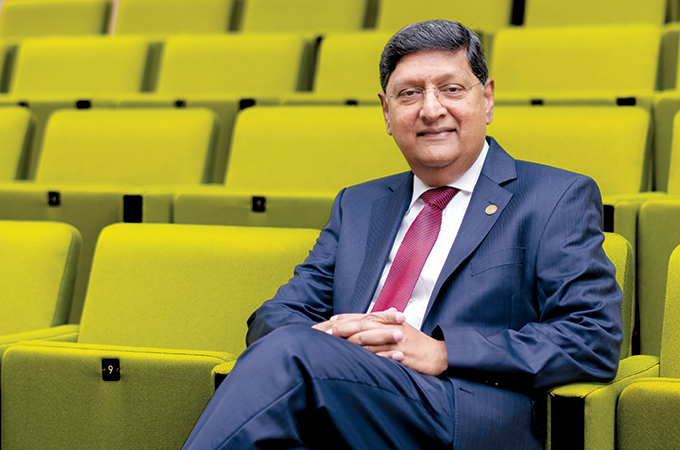
 B.jpg)
